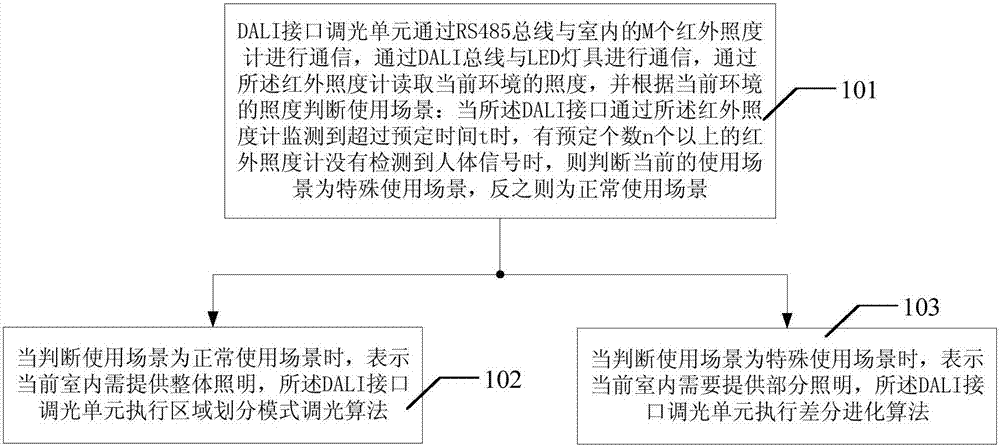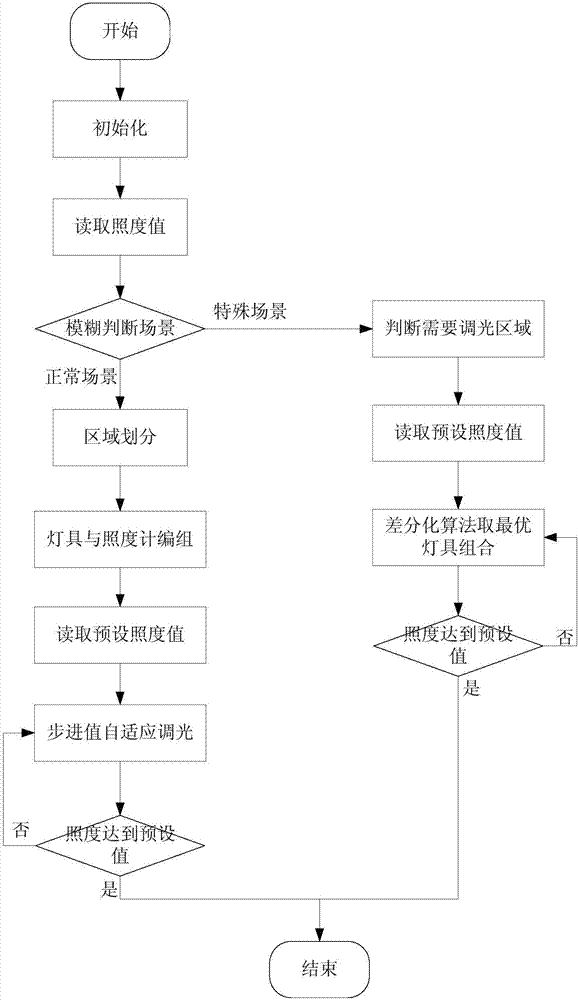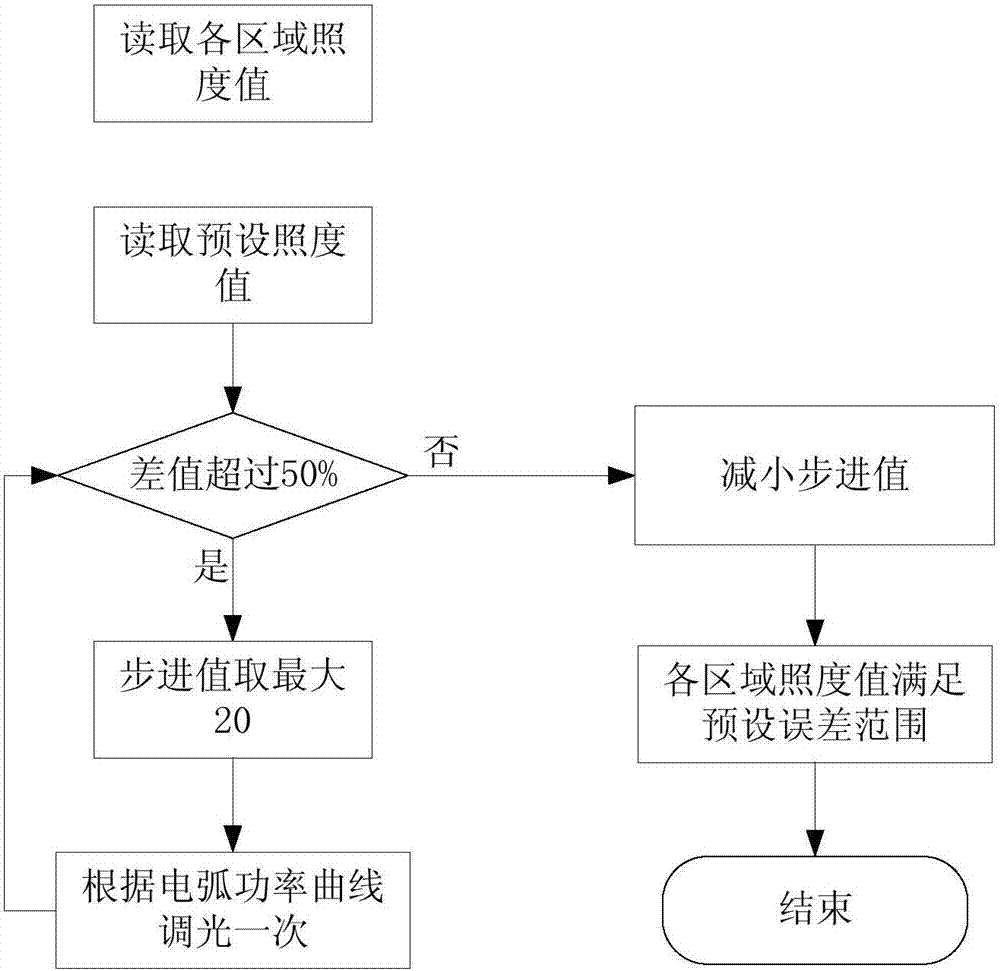Adaptive indoor dimming method and system based on differential evolution algorithm
A differential evolution algorithm and self-adaptive technology, applied in the field of indoor dimming and green energy saving, can solve the problems of inability to guarantee the comfort and uniformity of indoor lighting, neglecting the comfort of indoor lighting, etc.
- Summary
- Abstract
- Description
- Claims
- Application Information
AI Technical Summary
Problems solved by technology
Method used
Image
Examples
Embodiment 1
[0083] see figure 1 and figure 2 Shown is an adaptive indoor dimming method based on differential evolution algorithm described in this application, including:
[0084] Step 101, the DALI interface dimming unit communicates with M infrared illuminance meters in the room through the RS485 bus, reads the illuminance of the current environment through the infrared illuminance meters, and judges the usage scene according to the illuminance of the current environment: when the DALI interface When the infrared illuminance meter monitors that the predetermined time t is exceeded, and there are more than a predetermined number of infrared illuminance meters that do not detect human body signals, it is judged that the current use scene is a special use scene, otherwise it is a normal use scene;
[0085] Step 102: When it is judged that the use scene is a normal use scene, it means that the current room needs to provide overall lighting, and the DALI interface dimming unit executes th...
Embodiment 2
[0114] The present invention also provides an adaptive indoor dimming system based on a differential evolution algorithm, which is characterized in that it includes:
[0115] DALI interface dimming unit, M infrared light meters and multiple LED lamps,
[0116] The DALI interface dimming unit is connected to the M infrared illuminance meters through the RS485 bus,
[0117] The DALI interface dimming unit is used to communicate with M infrared illuminance meters in the room through the RS485 bus, communicate with the LED lamps through the DALI bus, read the illuminance of the current environment through the infrared illuminance meter, and illuminance judgment usage scenario: when the DALI interface is monitored by the infrared illuminance meter for more than a predetermined time t, and there are more than a predetermined number of infrared illuminance meters that do not detect human body signals, then the current usage scenario is judged as Special usage scenarios, otherwise it...
Embodiment 3
[0141] Application examples of the adaptive indoor dimming method and system based on the differential evolution algorithm of the present invention are provided below.
[0142] see Figure 4 , taking the classroom as an example, establish the position model of classroom lamps and sensors, and install five infrared illumination sensors in the classroom according to the detection sector area of the infrared illumination sensor.
[0143] see figure 2 After the system initialization is completed, first read the current indoor illuminance value collected by the infrared illuminance meter, and at the same time collect the infrared signal of the human body detected by the infrared sensor, and judge the current indoor scene through fuzzy judgment. Judgment method, taking a campus classroom as an example, the system collects the detection status of 5 infrared sensors in real time. When 3 or more infrared sensors detect no human infrared signals in their respective areas for more than...
PUM
 Login to View More
Login to View More Abstract
Description
Claims
Application Information
 Login to View More
Login to View More - R&D
- Intellectual Property
- Life Sciences
- Materials
- Tech Scout
- Unparalleled Data Quality
- Higher Quality Content
- 60% Fewer Hallucinations
Browse by: Latest US Patents, China's latest patents, Technical Efficacy Thesaurus, Application Domain, Technology Topic, Popular Technical Reports.
© 2025 PatSnap. All rights reserved.Legal|Privacy policy|Modern Slavery Act Transparency Statement|Sitemap|About US| Contact US: help@patsnap.com



